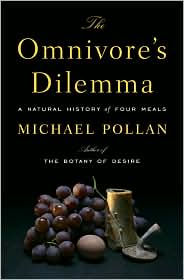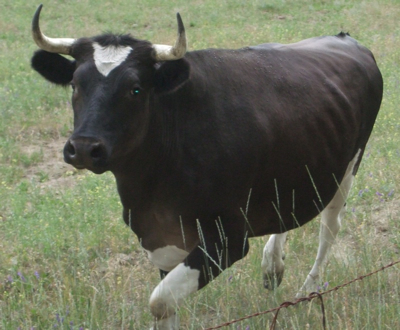My 22-year-old son works as a produce specialist in a health-food store and has become quite an evangelist for natural foods. He has been campaigning to change his parents’ eating habits and urged me to read The Omnivore’s Dilemma by Michael Pollan.
So I’ve been reading it — or rather listening to the audiobook because I’m a super-slow reader, and listening to audiobooks is a productive thing to do as I work on outdoor chores on our Washington land.
Pollan talks about “storied food,” food presented in natural-foods stores with brochures about how the beef cattle “living in beautiful places” ranging from “plant-diverse high-mountain meadows to miles of Aspen groves and think sagebrush flats.” He notes that he, like many consumers are inclined to pay higher prices for such meat. Not only only do we perceive that the meat tastes better, but we also love a good story.
The chapter from which those quotes come from is full of discussion and examples of storied food.
But previous chapters told a grim story of factory farms, a narrative that would never be told at a natural-food store or any other retailer. This is the story of cattle crammed into feedlots, mired in manure lagoons, cattle that are fed a mush of corn (which they were never meant to eat), supplements, chemicals, and antibiotics (in part because their unnatural corn diet renders them susceptible to disease).
I don’t eat a lot of red meat, but we do have a weekly tradition of a steak cooked on the grill. It’s yummy, and I look forward to it. Hearing the story of the factory farms does indeed have me seriously questioning this habit. Of course, I tell myself that my boycotting factory-farmed beef will do nothing to stop the practice.
But then I think of “storied food” that is close to home. A few miles from our home here is a farm with a couple of horses and the most fabulous specimen of bovine you’ve ever laid eyes on. We just call him Bovine because we were unsure of his gender at first. Pretty sure Bovine’s not a girl cow — no udder. And probably not a bull because — ahem — something seems to be missing down there. So he’s probably a steer.
We feed him apples, which he absolutely loves and gobbles up. And I worry about him. Is he destined to be steak dinner? Is he the family pet? Is he a child’s 4H project (which doesn’t mean he still couldn’t be steak dinner)? I’ve noticed steer manure is popular here; maybe his function is to produce manure.
As I think about changing my eating habits away from factory-farmed beef, I think of our Bovine, the protagonist of a potential food story. It would still be tragic for me — or anyone — to eat our magnificent Bovine. But if someone does, they could at least take comfort that he had a happy grass-fed and apple-chomping life while he was here — not a miserable life of suffering that the factory-farmed cattle lead.
I mean, just look at him … the hero of a pastoral story of the vanishing small American family farm (his farm is for sale, by the way).
Read more of Pollan’s discussion of “storied foods” here.
To what extent are you influenced by “storied food?”

